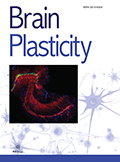Authors: Bolijn, Simone | Lucassen, Paul J.
Article Type:
Review Article
Abstract:
In the hippocampal dentate gyrus, stem cells maintain the capacity to produce new neurons into adulthood. These adult-generated neurons become fully functional and are incorporated into the existing hippocampal circuit. The process of adult neurogenesis contributes to hippocampal functioning and is influenced by various environmental, hormonal and disease-related factors. One of the most potent stimuli of neurogenesis is physical activity (PA). While the bodily and peripheral changes of PA are well known, e.g. in relation to diet or cardiovascular conditions, little is known about which of these also exert central effects on the brain. Here, we discuss PA-induced changes
…in peripheral mediators that can modify hippocampal proliferation, and address changes with age, sex or PA duration/intensity. Of the many peripheral factors known to be triggered by PA, serotonin, FGF-2, IGF-1, VEGF, β -endorphin and adiponectin are best known for their stimulatory effects on hippocampal proliferation. Interestingly, while age negatively affects hippocampal proliferation per se, also the PA-induced response to most of these peripheral mediators is reduced and particularly the response to IGF-1 and NPY strongly declines with age. Sex differences per se have generally little effects on PA-induced neurogenesis. Compared to short term exercise, long term PA may negatively affect proliferation, due to a parallel decline in FGF-2 and the β -endorphin receptor, and an activation of the stress system particularly during conditions of prolonged exercise but this depends on other variables as well and remains a matter of discussion. Taken together, of many possible mediators, serotonin, FGF-2, IGF-1, VEGF, β -endorphin and adiponectin are the ones that most strongly contribute to the central effects of PA on the hippocampus. For a subgroup of these factors, brain sensitivity and responsivity is reduced with age.
Show more
Keywords: Neurogenesis, hippocampus, physical exercise, FGF-2, IGF-1, VEGF,
β-endorphin
, serotonin
DOI: 10.3233/BPL-150020
Citation: Brain Plasticity,
vol. 1, no. 1, pp. 5-27, 2015




